#se: summer
Text

#txt#true nourishment#healthy eating#seasonal produce#seasonal eating#se: summer#wfpb#whole food plant based#vegan#nutritarian#vegetarian#plant based lifestyle#hello july#summer#nourishing waves#sidewalkchemistry
207 notes
·
View notes
Text
This audio (from here) just fits them ☀️🌡️
#my art#animatic#roommate banter au#frans#sansfrisk#frisk#sans#sans x frisk#frisk x sans#the way sans thought they were pointing at smth behind him#both dumbasses (affectionate)#fellow se asians! how are we doing this summer?? =D
139 notes
·
View notes
Text

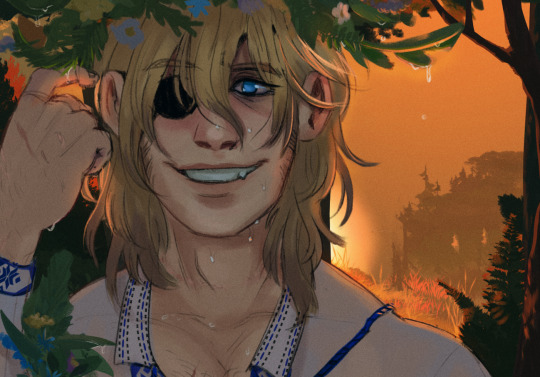
miłej kupalnocki, happy midsummer, etc etc etc!
from both me and my favourite slavic-adjacent king!
kupalnocka (noc kupały, kupala night, etc) is the traditional west and east slavic celebration of the summer solstice, love, and cleansing. among a number of other things, women weave garlands of flowers, herbs, and ferns and send them floating down rivers and streams to divine their future luck in relationships. to have it brought back was seen as a confession of love (even if for one night...) and a man would sometimes follow a particular woman's wreath even into deep or dangerous waters to return it. people would head into the forest to search for the legendary fern flower. which does not exist, of course. but who could blame you and maybe somebody of your choice for spending hours, alone, in the woods, all night, looking for such an important, elusive flower...
fun fact: the embroidery pattern is riffed from the traditional handicrafts of a region spread between poland, ukraine, and belarus! most slav per stitch!
#dimitri alexandre blaiddyd#fe3h#dimitri fire emblem#fire emblem#fire emblem: three houses#spx art#spx digishit#spx femblem#each garland on dimitri is a garland NOT in the clutches of sylvain (this is praxis)#me? least spiritual person alive but it's a fun celebration all the same! if I didn't live in texas of all places#perhaps the return of summer would be something to look forward to#the same way that my family has always looked forward to it in poland#but happy kupala all the same to everyone who's partaking!#if you're not... go weave a garland. make a bonfire. dance be merry get drunk go to the woods to have se
246 notes
·
View notes
Text
wish i had top surgery so when i make out with someone they can have their hands roam under my shirt (or even be shirtless) without me shriveling into a dried up worm
#fanged.ventposting#kinda. not really a “vent” per se but more a rant#it’s STILL REALLY HOT IN MY ROOM IM UNHAPPY >:(#also a yearning post. ranting And yearning! how fun!#fangedfagyearning#it’s funny tho bc in the summer i was like Yea I’m Proud Of My Trans Body Im Ok With It Sometimes and now i’m all. get these things off me#i overuse tags i think but i have so many extra thoughts#mlm#gay#mlm yearning#t4t mlm#gay yearning#nblm#mlm thoughts#mlnb#ftm mlm#gay mlm
123 notes
·
View notes
Text
I have become a full fan of wave to earth, so I want you to be as happy as me and listen to their beautiful songs
P.S. this song is from "se so neon" just as good as w2e listen to them!!!
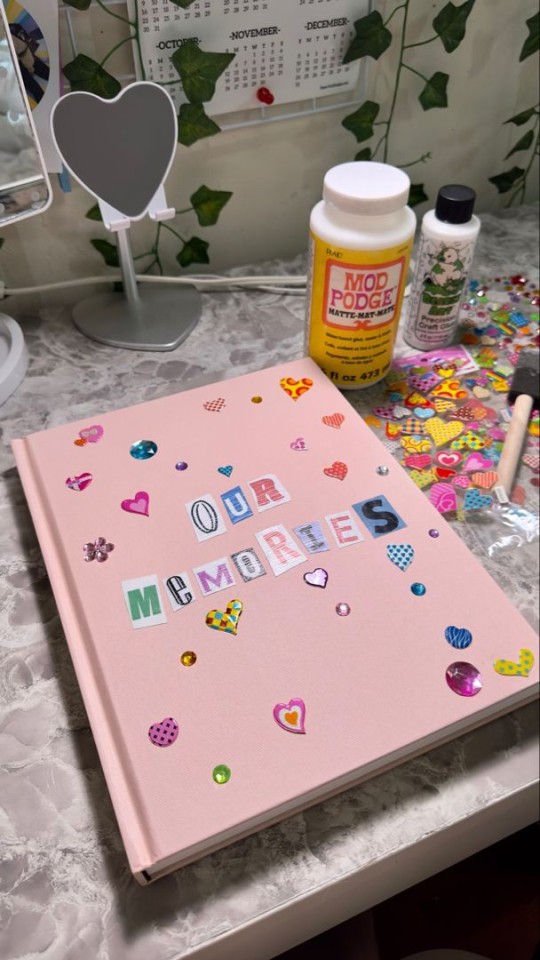
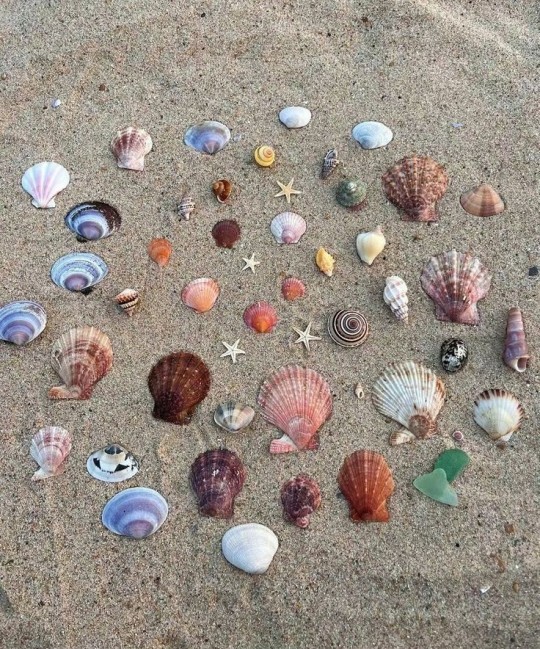


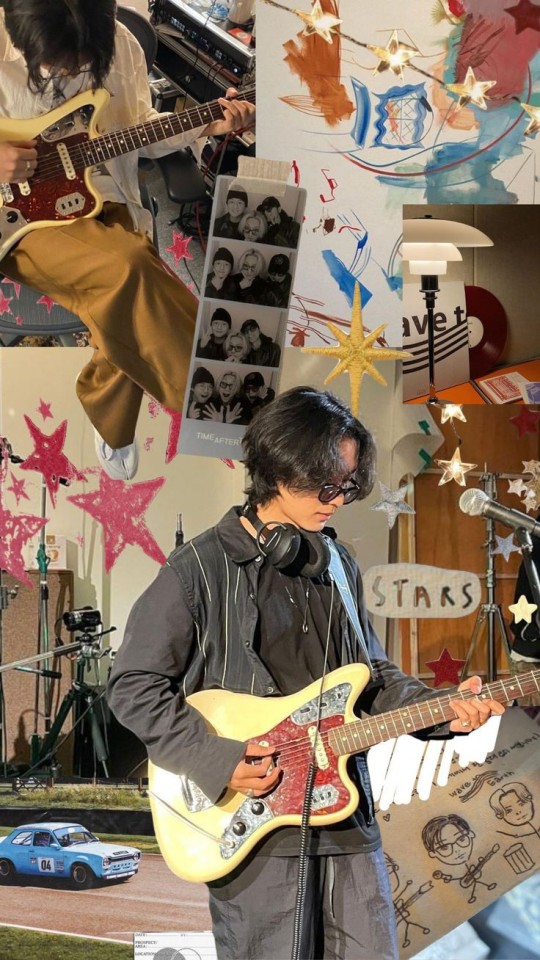

#daniel kim#wave to earth#w2e#kpop#kpop icons#kpop layouts#newjeans#soft bios#hanni#minji icons#danielle icons#kaomoji#coquette moodboard#summer#summer vibes#stickers#aesthetic layouts#se so neon#paint#Spotify
46 notes
·
View notes
Note
So apparently after the Tallinn gig, Jere and Bojan went inside the tour bus together and stayed there for a while. Then Jere came out, bantered with the fans a little from further away but did not stay and left the venue. Then the other JO members came out to greet the fans but Bojan stayed inside the bus.
What do you think happened with these two?
Lots of tears, foreheads pressed together, hugs so tight a few ribs were crushed, head scratches, neck kisses, vows of eternal bro-ship, some feels were copped, next facetime date confirmed, obviously.
And then Bojan needed a moment to have a bit of a cry I MEAN SAVE HIS VOICE OF COURSE.
#I mean#I hope that's what you're asking?#I've seen the talk about a break-up and it's tiring#the fact that they are more private actually probably means they are closer than ever?#Jere is more careful about his privacy nowadays anyway#remember how in the summer people assumed they weren't friends anymore because they didn't interact in public#which was the stupidest thing ever#and seeing it again now makes me headdesk#they spent a week together and jere followed them to tallinn#yeah sounds like they hate each other now#sorry anon this is not directed at you per se#just wasn't sure about your wording#ask#sad bojere bitches support group
36 notes
·
View notes
Text
Mokumokuren
Birds of different feathers flock together
Noticed online by head-hunting publishers, Mokumokuren hasn’t waited very long before polarising the attention of Japanese readers. With strange The Summer Hikaru Died, horrific bromance dealing with body dispossession, the mangaka signs a series of sophisticated oddity, that sets itself apart from the predictability of current fantasy productions.
Interview by Fausto Fasulo. Original translation: Aurélien Estager. English translation: “Keikotwins���. Bibliography: Marius Chapuis. Thanks: Camille Hospital & Clarisse Langlet (Pika), Yuta Nabatame, Mayuko Yamamoto & Mana Kukimoto (Kadokawa), Chiho Muramatsu (Tohan)
(T/N: Interview given to ATOM in winter 2023; 2 volumes were out in French.)
-
In an interview given to the CREA website in November 2022, you confided inventing stories since very young. Did your first fictions resemble the ones you draw nowadays?
It’s true that there are quite a lot of common points between the stories I imagined when I was a child and the ones I tell nowadays in my mangas. Especially a specific motif, that has been haunting me since the time when I wasn’t really aware of the world surrounding me: the presence amongst us of “non-human” beings, that nonetheless have a perfectly normal, ordinary appearance…
And how was this “obsession” born?
Precisely identifying the origins is complicated, my memories are too blurry, I think… What I can tell you is that I’ve always been fascinated by “creatures”. For example, I remember being very impressed by Peter Jackson’s bestiary in the Lord of the Rings trilogy. By the way, still in a fantasy register, I am also a big fan of Harry Potter adaptations… (She thinks.) And I’ve always liked yōkai stories, you know. I think that what I like in all these mythologies is the idea of species classification: each has its own characteristics – physical, biological – its own way to apprehend its environment.
In Japan, yōkai are integral part of regional folklore. Did the place you grew up in have some specific beliefs?
I was born and grew up in Tokyo, and, as you must know, yōkai are mostly associated with rural areas. I was thus never really bathed in this type of regional fantasy folklore. There are all kinds of yōkai and we can perhaps see in some more contemporary urban legends the echo of certain past beliefs? (She thinks.) I am a bit frustrated, because I believe that I could remember a legend that would have impacted me, but nothing comes to mind immediately, sorry!
You have already said so in an interview and it’s quite obvious when reading your work: you are a big amateur of horrific fiction. What has been your first contact with the genre, all medium included?
It was television that introduced me to horror: special shows, television films, series, I was watching these programs with a mix of fear and enthusiasm, a confused sensation that particularly delighted me! (She thinks.) And amongst all the aired shows, I will remember two titles: Hontō ni atta kowai hanashi and Kaidan shin mimibukuro*.
* Inspired by the homonymous manga magazine published by Asahi Shimbun, Hontō ni atta kowai hanashi (lit. “Scary stories that really happened”) is a series produced by Fuji Television that has been airing more or less weekly since 2004. Derived from literary material (a series of compilations of hundreds of short stories by Hirokatsu Kihara and Ichirō Nakayama, published from 1990 to 2005) Kaidan shin mimibukuro is a series made of several short movies depicting ghost stories based on real testimony.
Did you read horror mangas when you were young?
Let’s say that I was more interested in live-action productions. Nowadays, I obviously appreciate some horror manga authors, without pretending to be any expert in the subject. For example, I like Junji Itō’s work, but I am far from knowing it for a long time… (She thinks.) I could also talk about Shigeru Mizuki, who I also appreciate a lot.
The mechanics of fear aren’t the same in occidental and oriental fictions. You like American horrific productions – like Ari Aster movies – as much as ones from Japanese origin – you notably quote Ichi Sawamura novels and Kōji Shiraishi feature films. Can we say that you are tying these two perspectives with The Summer Hikaru Died?
My relationship with horror is more imbued with oriental sensitivity. But what I find remarkable in occidental horrific productions is work on image. In The Shining like in Ari Aster movies, for example, there is real research made on frame composition and choice of colours. I also try to follow this aesthetic reflection in my work as a mangaka.
In Ari Aster’s work, beyond the very precise staging, there is this permanent desire of ambiguity. Do you try to dig this same equivocal trench?
Absolutely. I try to tell complex feelings as well in The Summer Hikaru Died, like fear dyed with nostalgia or attachment, repulsion mixed with fascination, with attraction…
How do you “sort out” the shots that inspire you in cinema?
I don’t draw while freeze-framing during specific scenes. I would always rather watch a movie as a “focussed” spectator. However, I pay a lot of attention to the way the director composes their frame. I sometimes take some notes, but I most often simply keep it in a corner of my mind.
Could you tell us when and how the story and characters of The Summer Hikaru Died appeared to you? Have they matured a long time within you?
I’ve started thinking about this story when I was preparing university entrance exams. I was aspiring to join an art uni, and I was drawing every day. I can’t really say I made my characters “mature”: back then, I wasn’t thinking that the drawings I was making would one day end up being published, way less being serialised! I innocently created characters close to me, without guessing that one day they’d become manga protagonists.
One of your foundational reads was Sui Ishida’s Tokyo Ghoul manga. Can you tell us how you discovered it and what effect it had on you?
I don’t really remember how I discovered this series, but what I know is that I became crazy about it at first read. What I liked – and what I still like – is this idea of telling a story that confronts humans to these “different” beings while following the point of view of a character that represents alterity. Beyond this strictly dramatic aspect, Sui Ishida’s storyboarding and character design have had a strong impact on my work. However, I want to add that Tokyo Ghoul isn’t the only title I took inspiration from, I obviously have other references…
Do you do a lot of researches to define the design of your characters? You seem to draw them easily, in a very natural gesture…
I haven’t spent a long time defining my protagonists. First, there are few in the manga, then, they evolve in a rather realistic universe. My goal was rather simple: they had to look believable in the reader’s eyes. I wanted people to be able to imagine crossing them in the street, you see?
It’s after seeing illustrations posted on social media that depicted the future characters of The Summer Hikaru Died that the publishing department of the Young Ace Up magazine noticed you. How have you reacted when approached?
I was very surprised, because I absolutely wasn’t trying to become a mangaka. I would have never projected in such a future, you see. And, very honestly, if they hadn’t suggested working on this series, I don’t think I would ever had pushed the doors of a publishing house… I am then very thankful towards the persons who have allowed me to enter.
And what would you have done if you hadn’t been solicited?
Back when I’ve been contacted, I was considering – still vaguely – working in the video games field. But I wasn’t really proactive, I wasn’t contacting anyone, wasn’t sending resumes…
Did you want to do chara-design?
Why not, yes. What I like in video games is the range of possibilities they offer. You can then create an entire universe and this is rather exhilarating.
So you’re a gamer…
I have dropped my controller since I’ve started drawing manga. But yes, when I had more time, I played rather regularly, especially Nintendo productions…
Even if you play rather little nowadays, do video games influence your work?
I can’t say whether it really is an influence, but the Undertale game has left a big mark on me. I felt its creator’s strong will to surprise players, to make them feel unprecedented sensations…
Horror manga only relies on art and storyboard to provoke fear, whereas cinema and video games can also rely on sound. Is it from this observation that you have decided to particularly work on your sound effects?
Absolutely. I have thought a lot about the way to introduce and stage sound in The Summer Hikaru Died. The sound effects that you can find in the manga are indeed the result of this approach.
In an interview given to the Realsound website, you mention the use of the シャワシャワ (“shawa shawa”) sound effect. Knowing that occidental readers are way less sensitive to these graphicoustic details, can you explain its meaning?
“Shawa shawa” expresses the song cicadas make in western Japan. It’s a very special noise because in the different regions live different species that make specific sounds. So when I choose this specific sound effect, I convey a geographic and temporal piece of information to the reader, who can then guess the location and season the action takes place in. (She thinks.) When using this sound – that we especially find in the beginning of the manga – my goal was to play with silence, particularly when the song stops. I thus had the idea of representing this sound effect with an easily readable font, so the reader would make no effort to decipher it, as if the sound was asserting itself naturally, you see? I hoped to suggest a saturation they couldn’t avoid and that, when it’d stop, would immerse them in absolute silence.
The Summer Hikaru Died transcribes very well this particular atmosphere of Japanese summers…
Yes, I really wanted to signify this languor in my manga. And the cicadas’ song we discussed earlier contributes to creating this atmosphere: it’s an overwhelming sound, sometimes irritating, you cannot escape from in summer – Japanese readers obviously know what I’m talking about. (She thinks.) I also gave special attention to shadows: summer light being very bright, shadows are very sharp, very deep.
Do digital tools allow you to get this result more efficiently than traditional?
I work on Clip Studio Paint, and it’s true that it sometimes allow me to save time. Consider the work on shadows: I never apply solid black because I like saturating space with hatches and, with digital tools, I can obtain the desired result faster because I can duplicate each of my lines.
Your use of hatches is sometimes reminiscent of Shūzō Oshimi’s…
I don’t know his mangas very well, but it’s funny that you mention him because I recently read his latest series, Okaeri Alice. In any case, I really like his style and I perfectly understand how you can bring his universe and mine together.
The Summer Hikaru Died relies on the concept of body dispossession, that obviously takes back to the Body Snatcher novel by Jack Finney and its movie adaptations. Did you think about it?
I don’t know this book very well, but I know its theme has been approached often, especially in movies. As I was saying at the beginning of this interview, my idea was to adopt the point of view of a non-human and tell his indecision, his moral questions…
We also find this idea in Hitoshi Iwaaki’s Parasite…
I haven’t read the manga fully, but I’ve watched the anime adaptation that was released a few years ago (R/N: in 2014). I remember rather liking it, even if I think I offer something different with The Summer Hikaru Died. What interests me is sounding the inwardness of my non-human character out and expose all his dilemmas. What is his place amongst men? Is he legitimate in our world? Here is the type of questions that pushed me.
One of the impacting scenes of volume 1 of The Summer Hikaru Died is the one when Yoshiki penetrated Hikaru’s body by shoving his arm into his torso. It’s a sequence that is both very sensuaI – to not say sexuaI – and also very horrific. How did you get this idea?
I wanted to put the readers in an uncomfortable position. A stressful situation that could take several forms because, according to your sensitivity, you can feel very different emotions in front of this scene: sexuaI arousaI, fear or disgust. For me, it was supposed to put the reader in some kind of catatonia, you see?
Do you chat a lot with your tantō, especially around these slightly “complicated” scenes?
I have free rein, you know, I can draw everything I want. My editorial supervisor has never asked me to temper some sexuaIIy connotated parts. My discussions with him don’t revolve around this kind of things, but rather around the structure of the scenario itself: where to place this scene in the narration? Is it better to put this sequence before this other one? Nowadays, I am more at ease with all the scripting layout but, at the beginning, I needed support.
What allows you to get, from a dramatic point of view, the mix between bromance and horror?
I wanted to show the differences in sensitivities and values between a human being and an “other than human”, and tell the misunderstandings this can cause when both meet. When Yoshiki “scratches” under the appearance of the one who is supposed to be his best friend, it creates a first point of conflict in the story. I then hoped to make his relationship with Hikaru – or rather with the “entity” that pretends to embody him – a kind of undefinable bond, that wouldn’t be friendship, nor love.
Do you know today where this strange relationship between your two heroes will lead you?
I know more or less how all of this will evolve, yes. I have decided on my story’s general plot since the beginning. I can only tell you that The Summer Hikaru Died won’t be a long series.
How do you explain the almost instant public plebiscite of your series in Japan? You perhaps cannot have perspective on it but, in a saturated publishing landscape, you have managed to stand out…
Hm… Indeed, I don’t really have precise explanations to give you about this success. Maybe the covers’ design has been in favour of the manga? I asked the person in charge of graphics to make sure that the visuals would be noticeable in bookstores. That’s why the books have this monochrome aspect, with the title discreetly placed. I didn’t want obvious advertisement banners, but something simple, like this blue background for the first volume, on which the character stands out. I also wished to create contrast between the jacket’s and the inner cover’s drawings. I thus had requirements that didn’t quite go alongside what we can nowadays see on the shelves of Japanese bookstores.
#the summer hikaru died#hikaru ga shinda natsu#/long post#I'm not a native eng speaker so excuse mistakes!#the fr version has fancy words that I simplified for the eng translation#Feel free to ask any question!#The og article had manga illustrations with funny comments as legends + a short analysis of the manga's narration that I didn't include#The og title was 'Qui se dissemble s'assemble'#which is a play of words saying the opposite of idiom 'Qui se ressemble s'assemble' lit 'who look alike go together'#so I went for a silly equivalent lmao
51 notes
·
View notes
Note
hello!
In your Yang-is-the-Salem-in-Bees post you mention yang and cinder paralleling each other. Could you talk more about that? 👀
the obvious place to start is the semblances. bc it isn’t just “fire powers,” it’s:
burn: every time she gets hit, it makes her stronger; yang takes the damage, feels the pain, and then hurls it back in bursts of fiery power. the harder she’s pushed, the more ferociously she can push back.
scorching caress: to superheat a liquid, you heat it to a temperature under conditions which prevent it from boiling. specifically, undisturbed water in a very clean container with no nucleation sites. this is an effect of surface tension, which suppresses the formation of bubbles. superheated liquid is in a metastable state and will instantly boil—often explosively—as soon as it’s jostled or otherwise disturbed. in other words, superheating is about heat under pressure. scorching caress isn’t truly superheating in the strict sense, but it IS a metaphorical representation of the concept; heat under intense pressure, pushed beyond the brink of what can be endured, the deceptive calm and the violent explosion that follows. that’s cinder through and through, and that’s scorching caress.
see how they rhyme? one burns, the other boils. fire versus heat. combustion versus surface tension. both of them, in contrasting ways, are empowered by pressure and pain.
this similarity and contrast is also carried through into their relationships with anger:
yang has a fierce temper that she keeps in almost perfect balance; she’s in tune with it and confident in her mastery over it, comfortable letting it out when she needs it and quick to rein it in when it’s not helpful. on the rare occasion she snaps without meaning to, she checks herself instantly. the perception of others that burn is connected to her anger at all is an illusion created by the correlation between moments when yang uses her semblance and when she uses her anger—to protect herself or to protect others she loves.
cinder is angry literally all the time. her anger is sharp and venomous and hungry and she holds it pressed down into a tight little ball underneath the masks she wears because she doesn’t know how to exist without it. like superheated water, her moments of calm or confidence are always one fleeting disturbance away from erupting into unchecked fury. even her fear has an edge that can twist into anger if she’s pushed far enough.
it’s the difference between a controlled bonfire and a subterranean peat fire. one is safe; the other may smolder for years and explode into wildfire if it’s exposed to air. both yang and cinder are, arguably, defined by their anger—there is nothing else that so wholly expresses who yang is than how self-possessed and controlled she is when she chooses to get angry, and likewise that tightly-compressed core of unspeakable rage is the essence of cinder’s character.
both of these characters lose an arm the night beacon falls; yang because she’s furiously leaping to blake’s defense, cinder because she murders a child to soothe her temper.
their recovery arcs in v4 are paralleled, as are their relationships with their parental figures; tai and salem are emotionally disconnected from yang and cinder in contrasting ways, with tai well-meaning but unfamiliar with who yang is and salem in tension between needing cinder to be her tool/weapon but wanting her to be free and safe, as well as not being able to see through cinder’s masks.
(sometimes the tai+yang vs salem+cinder mirroring gets very direct, like

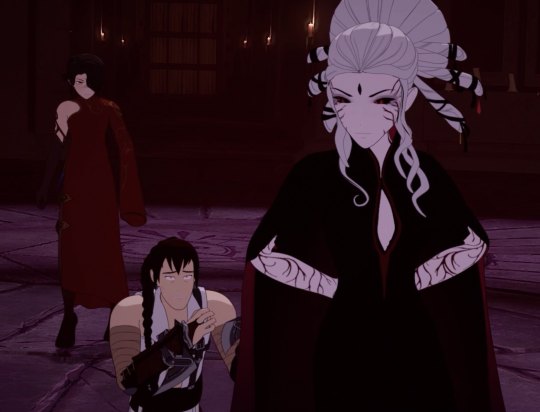
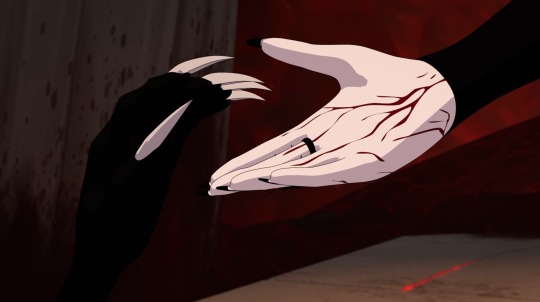
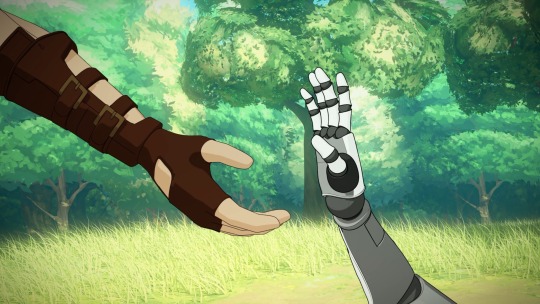
they can’t keep getting away with it!)
the general thrust of tai’s advice to yang is about holding back: he thinks she’s “predictable” and “a little boneheaded” and reads into her use of her semblance in the vytal tournament an over-reliance on brute strength. he tells yang to find ways around obstacles, instead of through.
salem, in contrast, snaps at cinder to stop holding back. the slow pace of this training, cinder’s struggle to achieve mastery over the grimm arm and timidity with her new magic, frustrates her—because she doesn’t understand where it’s coming from—and she becomes impatient. and then, in v8, she implicitly recants that impatience (“here i am holding you back.”)
[whether tai will have a similar moment of reconsidering yang remains to be seen. but on the strength of the paralleling, i bet he will.]
there is something about yang painting her arm yellow and the growth of the grimm arm to cinder’s shoulder as she begins to handle it like her arm rather than a weapon itches in the back of my mind constantly.
there is also a certain rhyming between yang’s feelings of rootlessness and cinder’s intense fear of destiny and desperation to fight what she believes is her fate to be enslaved and hunted; the unease with having no clear purpose vs the pain and terror of being used.
#and through summer ruby and yang are cinder’s evil stepsisters of course#the one who maimed her (she’s forbidden to retaliate) and the one who would die to protect the other#which isn’t a parallel per se but it’s fun
37 notes
·
View notes
Text

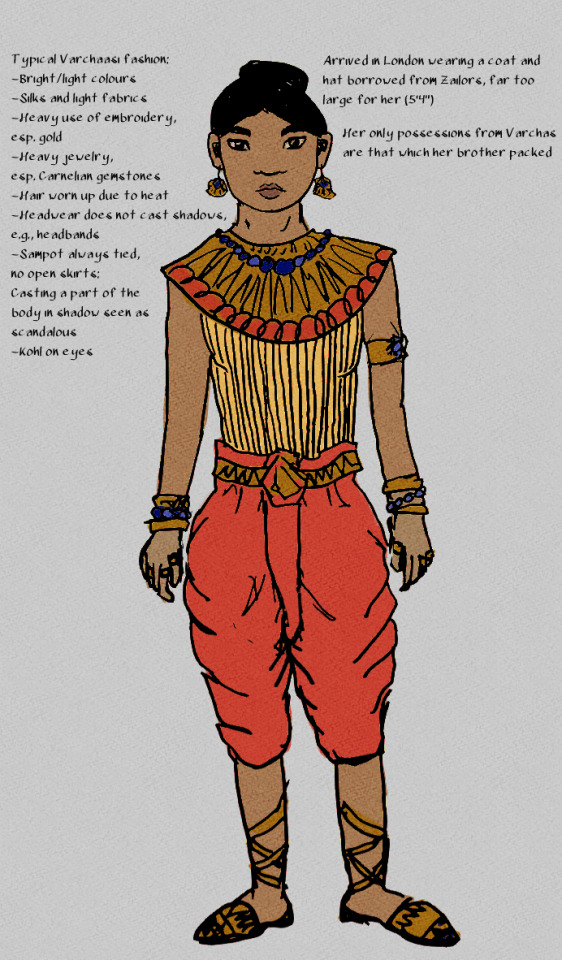
Tamaas (eventually Tamara)
Addressed as: Madam* (she/her)
Age: 23
Height: 5’4”
Occupation:
Main Skills: Shadowy, Watchful
Prominent Quirks: Melancholy
Closest to: The Urchins
*it's a form of address that feels strange compared to its Varchaasi equivalent, but she no longer has any claim to that title.
Backstory below the cut:
She never questioned her life, much like she never questioned her love for Mihir and her native Varchas. One rarely has to when all is well and life is easy.
She doesn’t understand why her brother did not share this contentedness. Fraternal twins, they were ever-close, sharing everything, but his interest in the Jewel-Turbaned Youth and his fanciful club was something that she simply could not get her mind around. The rest of the family paid it no mind—they’re harmless anyway. Let him have his fun.
She doesn’t know what it was that stopped her from retiring to bed that one fateful evening, a nagging in the back of her head that something was off. When she stepped back out into the yellow evening lamplight, a familiar shape slipping down the streets confirmed her intuition. Her brother made it as far as the Mirrored Gate before she clamped her hand around his wrist. Was he mirror-mad? What could he possibly be thinking? Who would want to leave the light, and to set sail on a steamer with a Tamaas captain he’d only met that morning? She’d argued with him, begging him to see sense, until they were both shouting. Deep in their quarrel, she’d barely noticed the shape in the mirror pressed up against his back until it was too late. It struck and he screamed, jerking to the side. Hand still latched around his arm, she slipped in turn, down the slope beyond the gate and both of their lives ended in an instant.
She’d later piece together what had happened from The Sympathetic Captain, most of her memories a blur, and Mihir knows, she’d had enough time on that ship to play her retelling back in her head in endless combinations. Before her brother had even met the ground, before his head had hit stone and his heart had stopped beating, he was Tamaas. As was she, not a fraction of a second later. The Captain had heard the commotion and was not far from the bottom of the cliff. She had insisted that the Captain take them both, that no one in the city would help them anymore. She had to get him to the next port where he could recover.
How his body had disappeared a day later, on a ship miles from the coast, was not one the Captain could answer, no matter how much she raged, how many objects in the cabin she smashed in her fugue. The Captain could only offer a sympathetic ear and a cup of tea.
When the ship finally docked in London she disappeared into the darkness, too ashamed of her grief to say goodbye. Her life was over, but somehow she would have to keep living, Tamaas or otherwise.
#my art#anyway new blorbo just dropped#tamara#also very normal about the sun#but differently#i haven't gotten there yet but she's going to meet ockham very soon#and are about to have a great time first overcoming the language barrier#and then the everything else#she initially thought ockham was mirror-mad#but as soon as they could understand each other well enough to learn hishertheir actual deal you bet she nearly had an aneurysm#coming from a culture where you fear what lurks in the Is-Not#only to become closest to a creature of the Is-Not#specifically courting the creatures she fears the most#ockham was also the one to ask her name and when she said she was simply tamaas#ockham said absolutely not try again and she eventually landed on tamara#initially it was a reminder of what she lost#but eventually simply was her name#there are also a lot of my notes on what i imagine varchaasi fashion looks like in that second image#based on a lot of older SE Asian clothing specifically cambodian#but with the added touch of living in perpetual summer heat and humidity#and a culture that does not do shadows#and doesn't have to deal with UV radiation#but if anyone wants to join me on the non-London fashion train#please talk to me i love this kind of worldbuilding
37 notes
·
View notes
Text

um ocs for the dream vn playable only in my mind...
#'but lys!' i hear you say 'what happened to your thing abt practicing more diverse features.. 6 of these ppl have the same hair & face type'#some of these are all the same person tht's all next question. i'd elaborate but the tags wld b a weird place to do that bc no one would se#there are definitely more but i have been drawing these guys all day and ran out of room dndndns#my ocs#my art :>#digital art#eeerm i have to name them all later djdjjds#oc: mysterie (grape)#oc: chrysalis (blue)#oc: aurela (ruby)#oc: summer (tangerine)#oc: viv (lime)#oc: carlo#oc: amanda#yaaay finished naming!!
20 notes
·
View notes
Text
Me at the song birds that were being too damn loud at 5 in the morning

#This is why winter is the superior month. Birds shut the hell up#WISH I HAD ONE THIS YEAR!#its fucking march and its in the high 50s#Im wearing shorts as I write this#remember the year 1816? “The year without a summer”#because some volcano in Indonesia went off and blocked out the sun. lowered the temperature around the world by like 2-7 degrees F#It caused mass starvation and crop failure in most of the world#historian John D. Post called it “the last great subsistence crisis in the Western world”#Im not saying I want that back per se.....#buuuuuut I do feel like Im owed a proper winter
11 notes
·
View notes
Text

#txt#true nourishment#food centric herbalism#healthy eating#wfpb#whole food plant based#plant based lifestyle#holistic leveling up#leveling up#fitblr#vegan#raw vegan#nutritarian#vegetarian#fruitarian#hello june#se: spring#se: summer#seasonal produce#sidewalkchemistry
156 notes
·
View notes
Text
My headcannon is that for sexism reasons Vicky Vale who wants to be an investigative journalist and it's absolutly amazing at it has to write gossip/interview celebrities while Jack Ryder who wanted to be a interviewer/gossip writer and would be really good doing it has to do investigative journalism. Both hate it.
Vicky keeps going feral and extremely mean in her interviews to see if getting the company sued or something will let them either follow her wishes (because she is also showing her talent and dedication to getting the scope) or at least end her contract so she can try litteraly anywhere else. Unfortunately the audiences LOVE IT. A lot of them hate her and call her vulture and all the insults for evil gossip reporters but they love the stories. Vicky Vale asked Bruce Wayne if he thinks his parents would be alive if he had a knife on the aniversary of the Waynes murder? Wild. She correctly predicted Jason Todd was alive in his funeral by making mean coments over the close casket? Genius. She told Tim Drake that him coming out as bi was boring? Fascinating. She said "bohoo" when Dick Grayson talked about some hardship in school at age 12? Feral.
Jack Ryder's methods instead are talking about how he will die if he continues doing his job and how he isn't made for all this stressfull live dangerous things like following Grundy in Gotham's cemetery or looking for possible riddler's landmines based on a weird puzzle that is now appearing on the back of all Gotham's childrem ceral boxes or reporting on an active gang war. He hopes people will pity him and the public opinion will be enought for him to finally be able to just do gossip/interview cool people. But people just find him relatable. Forgetting his gas mask when reporting a Scarecrow attack? Who never? Mentioning how much he would preffer to be talking about a guy who has a cool dolphim rescue center instead of trapped in a Joker "comedy show"? Yeah, same. "Ew ew ew I'm a sewer, I hate it, it smells bad, it looks bad, my shoes are dirty, ew" Being in a sewer does smell bad.
#vicky vale#jack ryder#batman#i love fictional journalists and seing how this two aproach things i think it's wild that vicky gets gossip and jack the news?#summer gleeson is my favorite but i adore the whole trio
38 notes
·
View notes
Text
I've been thinking about the setting of my TUGS au, the prequel to casa tidmouth, and by extention I began thinking about the show TUGS itself.
it's kind of depressing to know that TUGS is most likely set during the years RIGHT before world war 2. I remember watching a TUGS iceberg video a long time ago, maybe last year-ish. after a series of callbacks and alludes to the little environmental details right at the end of the video, the creator said that the show is possibly not set during the 1920s, but the 1930s, nearing another war period, and that's why I've changed the era of what this AU is set in many months ago.
mitton and cardona claimed that the show is set during the "booming era" of the 1920s, but I can't help but think that maybe the 1920s isn't the most fitting era with how the tone of the show is.
the 1930s setting really does make sense though -- the atmosphere in TUGS is much more, I dunno how to exactly say it, gloomy? serious? it's still a mostly lighthearted kids show, but, to quote some things indirectly from the iceberg video; what's with the munitions? the flammable barges? johnny cuba? the constant mention of broken ships? characters dying right on the screen in such a macabre fashion? burke and blair's whole job? then my mind thought about the star tugs and z-stacks, their relationship and purpose and how it ties to the pre-ww2 feeling of the story.
the conflict between the star tugs and z-stacks isn't fueled by personal grudge against each other. I apologize for comparing TUGS to ttte, but in comparison to its sister series where the engines of sodor have personal banter against each other selfishly, still manage to fool around during their jobs, get into accidents due to their own hubris, and end the day where they learned their lesson, TUGS is much different. they're just there to work and carry through their contracts. they still banter with each other but they know their priorities. they are also driven by their conscience and rationale, not just some "oh he made fun of me so I'm not gonna help him out. I'm bigger and more important so I refuse to do this job and go back to my berth".
zorran dislikes the star tugs but knows that the contracts are much more important and he is willing to work with them if it means the job will be done. top hat, despite his personal distaste for anything smelly, QUICKLY changes his mind about lord stinker and works with him to save the goods engine. zebedee is a character more driven by his personal view on what's good or bad -- he helped the star tugs push princess alice back into place and showed concern when ten cents was pushing the oil barge to the sea, but there's a part of him that's definitely concerned for his own well being.
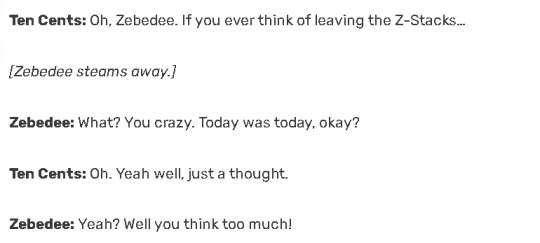
they have their personal opinions on both their teammates and their rival company's tugboats, but they know better than to let those feelings get in the way. not working means their presence as tugboats will be jeopardized.
these points, added to the very high possibility that TUGS is set during the late 1930s, creates another layer to the overall murkier feeling of the show. the characters know the times are dire. the characters know that they have contracts to go through. they know that something big is coming. they've went through world war 1! with how bluenose and the navy inserted their presence in bigg city port, there's also an idea that there's gotta be at least one character with a sense of foreboding amidst the business.
I also reckon they've grown some kind of fondness (???) for their rival company? it's like when there's a kid at school who keeps annoying you, but next day they're not there and you got a bit worried on where they might be. the two factions don't necessarily like each other, but their rival has formed a place in their normalcy that to get rid of them entirely is not going to do any good, really.
so yeah. that's all I have in mind right now.
#zin.txt#this is tugs#oh and to answer. the AU is gonna be set in around 1938#the stories aren't linear per se? probably like casa tidmouth where the story spans for the whole summer of 1999#especially there's regatta (summer) and bigg freeze (winter) like at least it'll take place a full year#oh boy. time to do some MORE history reading#also I just realized something#ten cents sunshine and zip are late teens in the late 1930s#and there's a war coming#uh. I'd rather not think too much about the implications.#fortezza bigg city
48 notes
·
View notes
Text



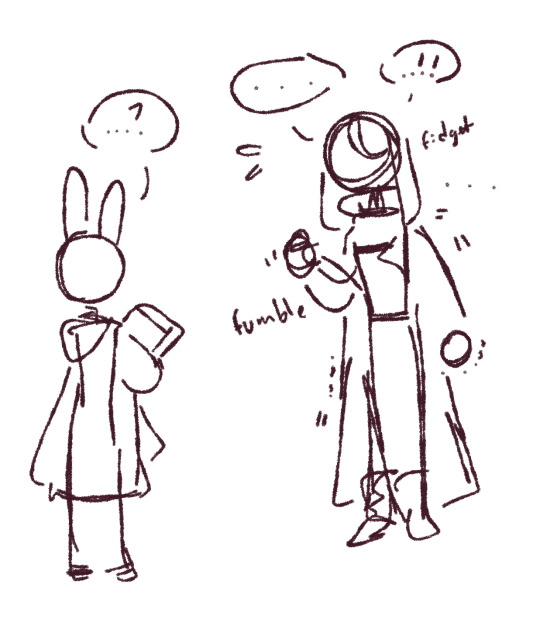

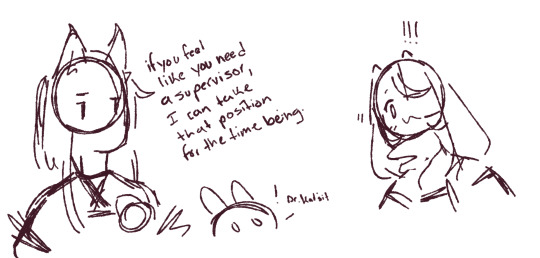


local silly is learning so much guys...<3
#arknights#arknights kal'tsit#arknights doctor#arknights amiya#arknights spoilers#in the tags i mean. you get it. anyway.#ahem*#BRO YO KALSIT...SHE HATES US HATES US I THOUHGT EVERYONIE WAS MEMEING YA'LL AR DOWNPLAYING????#ALSO NOOOOOOOO TALULAH!!!! WHY DID THY TAKE ALINA ROM HE R ITS SO UCKED YALLL#what...what am i...WHAT is happening....#i dont wanna se her down fall....also!!#when i saw those chacter show cases with talulah the fighter i thought we got her on our side for a limited time or something#not us playin in the past. was fun! i also liked reading the small stage blurbs before you head in#it fucked me up.#also L on my part but i found out...how to access the old side stories...#just yesterday...in the special operations/public records archive....#im so smart guys i have more reading to do!#anyway have fun with the rerun everyone! its mt personal fav summer event (gameplay wise)
15 notes
·
View notes
Text
I wonder what the hell the Non-Clique students thought of the riot that went on during Final Mayhem.
Like, I don't even think Gary tried to even bother with them for his "plan" to take over the school so in the POV of the Non-Cliques, it just looks like all the cliques (Aside from the Preps who just stayed at Harrington House to watch shit go down.) that have been bugging the shit out of you for the entire school year just decided to beat each other up and wreck the school to shit.
Then there's the bullies (Without Russell) who get beat up by Edgar in the main school building like... why did they even get involved? They have 100% respect for Jimmy? Were they just hiding in the school? How come Russell wasn't mad about it? Did Gary manipulate them too? What did he even have on them lmao.
Not even mentioning the ending that's so weird that it resulted in the community coming up with a theory where Endless Summer is actually just Jimmy in Purgatory because he and Gary fucking died after falling off the school's roof.
#I think about this games story to much#I think Bully starts off strong but the last act is a clusterfuck tbh.#Let's be honest we don't play Bully for the story we play it to dunk Sheldon into a trash can.#And then kiss Gord right after.#Pinky too they're my favs.#bully#bully canis canem edit#bully cce#vi rambles#Actually now that I think about it the chapter transition to Endless summer is kinda unintentionally ominous.#Like at the beginning of every chapter Jimmy gives a short monologue but at endless summer it's just quiet.#you know cause he's actually dead. /J#bully scholarship edition#bully se#bully game
15 notes
·
View notes